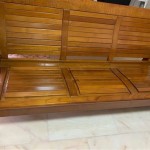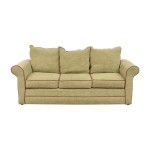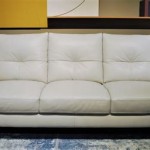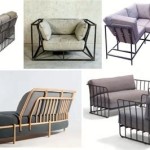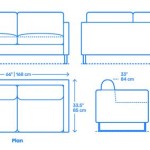The Functionality and Selection of Plastic Feet for Sofas
Sofa feet, often overlooked, play a critical role in the stability, aesthetics, and longevity of upholstered furniture. While various materials such as wood, metal, and rubber are utilized, plastic feet offer unique advantages in terms of cost-effectiveness, durability, and design versatility. This article will explore the various aspects of plastic sofa feet, including their benefits, different types, factors influencing their selection, and their impact on the overall furniture experience.
Plastic sofa feet are primarily designed to provide elevation, distributing the weight of the sofa and its occupants evenly across the floor. This prevents direct contact between the sofa frame and the floor surface, minimizing the risk of damage from moisture, dirt, and abrasion. Furthermore, the added height facilitates cleaning underneath the sofa, contributing to improved hygiene and maintenance.
Advantages of Utilizing Plastic Sofa Feet
Plastic as a material offers several benefits when used for sofa feet. These advantages contribute to their widespread adoption in furniture manufacturing.
Cost-Effectiveness: Plastic is generally less expensive than other materials such as wood or metal. This makes plastic sofa feet an attractive option for manufacturers seeking to reduce production costs without compromising functionality. The lower material cost translates to a more affordable product for the end consumer.
Durability and Resistance to Wear: Certain types of plastic, like polypropylene and ABS, are known for their high impact resistance and ability to withstand significant weight. These materials are also resistant to moisture, chemicals, and insects, preventing degradation and extending the lifespan of the sofa feet. This durability ensures that the feet retain their shape and structural integrity over time, providing consistent support for the sofa.
Design Versatility: Plastic can be easily molded into various shapes, sizes, and designs. This allows manufacturers to create aesthetically pleasing sofa feet that complement the overall style of the furniture. From simple cylindrical designs to intricate decorative patterns, plastic offers unparalleled design flexibility. Furthermore, plastic can be easily colored, allowing for seamless integration with the sofa's upholstery and overall color scheme.
Lightweight: Compared to metal or solid wood, plastic is a relatively lightweight material. This reduces the overall weight of the sofa, making it easier to move and position. The reduced weight also minimizes the risk of damage to flooring during relocation.
Ease of Installation: Plastic sofa feet are typically easy to install, often requiring only screws or simple snap-fit mechanisms. This simplifies the manufacturing process and allows for quick replacement if needed.
Types of Plastic Materials Used for Sofa Feet
The choice of plastic material significantly impacts the performance and durability of sofa feet. Several types of plastic are commonly utilized, each with its own unique properties.
Polypropylene (PP): Polypropylene is a widely used thermoplastic polymer known for its excellent chemical resistance, high strength-to-weight ratio, and affordability. It is a versatile material suitable for a wide range of applications, including sofa feet. PP feet are resistant to moisture, acids, and alkalis, making them ideal for use in various environments. However, PP can be susceptible to UV degradation over prolonged exposure to sunlight. Additives are often incorporated to improve its UV resistance.
Acrylonitrile Butadiene Styrene (ABS): ABS is a strong and rigid thermoplastic polymer known for its high impact resistance and good dimensional stability. It is commonly used in applications requiring durability and strength, such as automotive parts and appliances. ABS sofa feet offer excellent resistance to impacts and scratches, ensuring long-lasting performance. ABS can be easily molded and colored, allowing for a wide range of design options.
Polyethylene (PE): Polyethylene is another widely used thermoplastic polymer characterized by its flexibility, toughness, and chemical resistance. There are several types of polyethylene, including high-density polyethylene (HDPE) and low-density polyethylene (LDPE). HDPE is stronger and more rigid than LDPE and is often used for sofa feet requiring greater load-bearing capacity. PE is resistant to moisture and chemicals but may not be as durable as PP or ABS in terms of impact resistance.
Polyvinyl Chloride (PVC): PVC is a versatile thermoplastic polymer known for its rigidity, chemical resistance, and flame retardancy. It is commonly used in construction and building materials. While less common than PP or ABS for sofa feet, PVC can be used in applications requiring specific properties, such as high flame resistance. However, PVC is less environmentally friendly than other plastic options due to its chlorine content.
Recycled Plastics: The increasing focus on sustainability has led to the development and use of recycled plastics in various applications, including sofa feet. Using recycled plastics reduces the demand for virgin materials and helps to minimize waste. Recycled PP, ABS, and PE can be used to manufacture sofa feet with comparable performance to those made from virgin materials. The use of recycled plastics is an environmentally responsible choice that contributes to a circular economy.
Factors Influencing the Selection of Plastic Sofa Feet
Selecting the appropriate plastic sofa feet requires consideration of various factors, including the intended use, design requirements, and budget constraints.
Load-Bearing Capacity: The weight capacity of the sofa feet is a critical consideration. The feet must be strong enough to support the combined weight of the sofa frame, cushions, and occupants without deforming or breaking. Manufacturers typically specify the load-bearing capacity of their sofa feet, and it is essential to choose feet that meet or exceed the expected load requirements. Underestimating the load-bearing capacity can lead to premature failure and potential damage to the sofa or flooring.
Floor Surface Compatibility: The type of flooring on which the sofa will be placed is another important factor to consider. Hardwood floors, tile, and laminate are susceptible to scratches and dents from furniture feet. To prevent damage, sofa feet with smooth, non-abrasive surfaces or integrated felt pads should be used. For carpets, feet with a wider base or spike-like design may be preferred to provide better stability and prevent sinking into the carpet fibers.
Design and Aesthetics: The design of the sofa feet should complement the overall style of the furniture. The shape, size, and color of the feet can significantly impact the visual appeal of the sofa. Consider the existing design elements of the sofa, such as the upholstery, frame style, and hardware finishes, when selecting the feet. A wide range of design options are available, from simple and minimalist styles to more ornate and decorative designs.
Height and Clearance: The height of the sofa feet determines the clearance between the sofa frame and the floor. This clearance is important for several reasons. It allows for easy cleaning underneath the sofa, preventing the accumulation of dust and debris. It also provides space for ventilation, preventing moisture buildup and mold growth. The height of the feet should be chosen based on personal preference and the specific needs of the environment. Higher feet may be preferred in areas prone to moisture or where easy cleaning is a priority.
Material Durability and Resistance: The chosen plastic material must be durable and resistant to wear and tear. Consider the environmental conditions to which the sofa feet will be exposed. If the sofa will be placed in a high-traffic area, feet made from impact-resistant materials like ABS may be preferred. If the sofa will be placed in a humid environment, feet made from moisture-resistant materials like polypropylene or polyethylene may be more suitable. The chosen material should also be resistant to chemicals, cleaning agents, and other substances that may come into contact with the feet.
Attachment Method: The method of attaching the sofa feet to the frame should be secure and reliable. Common attachment methods include screws, bolts, and snap-fit mechanisms. The chosen method will depend on the design of the sofa frame and the type of feet being used. Ensure that the attachment hardware is of high quality and appropriate for the weight and stress that the feet will be subjected to.
Cost Considerations: The cost of the sofa feet is a factor that must be considered, especially for manufacturers producing furniture on a large scale. Plastic feet are generally more cost-effective than wood or metal feet, but the price can vary depending on the type of plastic, design complexity, and quantity ordered. Consider the overall budget for the furniture and choose feet that offer the best combination of performance, aesthetics, and affordability.
Sustainability: Environmentally conscious consumers and manufacturers are increasingly considering the sustainability of the materials used in furniture construction. Choosing sofa feet made from recycled plastics or sustainably sourced materials can help to reduce the environmental impact of the furniture. Look for certifications and labels that indicate the sustainability of the materials used.
By carefully considering these factors, it is possible to select plastic sofa feet that provide the desired level of support, durability, aesthetics, and value. Proper selection ensures that the feet contribute to the overall performance and longevity of the sofa.

3 Inch Black Plastic Furniture Legs 601 Singapore

Plastic Stem Sofa Feet Sofa008

Whole Gorgecraft 20 Pack Plastic Furniture Legs Couch Feet Non Slip Sofa Replacement Parts Flat Round For Sofas Chairs Cabinets Dressers Beds Pandahall Com

Plastic Feet Legs Sofa Beds Cupboard Cabinets Kitchen 36mm Pack Of 5 Diy At B Q

6 Pcs On Furniture Feet Sofa Plastic Chair Legs For Cabinet Com

Yanyang 100mm Height Plastic Feet Round Shape Sofa Support Furniture Legs China Leg Made In Com

Yanyang 100mm Height Plastic Feet Round Shape Sofa Support Furniture Legs China Leg Made In Com

Plastic Furniture Bed Divan Base Glide Feet Replacement Sofa Chair Legs

Cotton Linen Light Grey Double Sofa Metal Feet Plastic Thick Cush Brother S

Threaded Sofa Feet Sofa063

